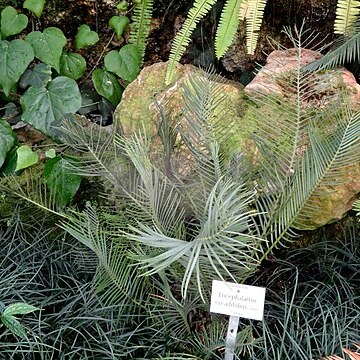Plant dioecious, palm-like. Stem aerial or decumbent, 0.5-1.5 m tall, unbranched or branched from base, covered by alternating series of woody bracts and persistent, swollen, truncated leaf bases. Leaves petiolate, pinnate with rachis incurved; leaflets pungent-pointed, entire, margins not markedly thickened; reduced in size towards base of rachis. Cones Aug.-Mar., 1 or 2, appear sessile, velutinous yellowish white. Male cones oblanceoloid. Female cones cylindric to ovoid, broader than male.


